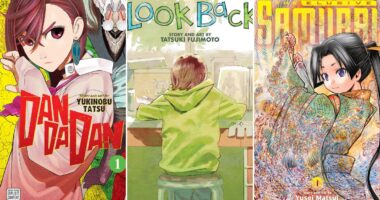How to Write a Simple Children’s Story: Writing a children’s story can be a fun and creative experience. It’s a great way to tap into your imagination and share your love for storytelling with the next generation. Whether you’re an experienced writer or a beginner, this guide will give you the tools and tips you need to craft a simple and engaging story that kids will love. So grab your pen and paper and let’s get started on your next children’s tale!
How To Write a Simple Children’s Story
Start With an Idea

Starting with an idea is the first step in creating any form of content, especially when it comes to children. Choosing a topic or theme that is interesting and appealing to kids is crucial in keeping them engaged and interested. If the topic is boring, children may lose interest quickly, making it difficult for them to absorb the information.
Here are a few examples of interesting and appealing topics for children:
Animals: Animals are a popular and timeless topic among children. They are fascinated by the different creatures and the ways they behave. Topics such as different types of animals, animal habitats, and animal behaviors are great options.
Adventure: Children love to explore new and exciting places, so adventure-themed topics are always a hit. This can range from exploring different countries and cultures, to going on a treasure hunt, or traveling through space.
Science and technology: Children are naturally curious and love to learn about how things work. Science and technology topics can range from learning about simple machines, to exploring the mysteries of the universe.
Food: Food is an important part of our lives, and children are no exception. Topics such as healthy eating, cooking, and food from different cultures can be interesting and educational.
Art and music: Art and music are great ways to stimulate children’s creativity and imagination. Topics such as different types of art, famous artists and musicians, and creating their own artwork can be engaging and fun.
Choosing an interesting and appealing topic is crucial in creating content for children. It helps to keep them engaged, interested, and eager to learn. Whether it is animals, adventure, science and technology, food, art and music, or any other topic, it is important to choose something that will captivate their imagination and leave a lasting impact.
Develop Your Characters

Developing your characters is an essential part of the writing process. A well-rounded and believable character can bring life to your story and make it more engaging for your readers. To ensure that each character is unique and has their own motivations, it’s important to invest time in getting to know them.
For example, let’s take the story of “Jack and the Beanstalk”. Jack is the main character and his motivation is to find a way to help his family. He is brave, resourceful, and determined, but can also be impulsive and naïve. His personality is shaped by his difficult upbringing and the challenges he faces along the way. Another key player in the story is the giant. The giant is greedy and selfish, but also vulnerable. He has a motivation to protect his wealth and will do anything to keep it safe. His personality is shaped by his life experiences and his own insecurities. The final key player in the story is the old man who gives Jack the magic beans. The old man is wise and mysterious, but also a little mischievous. His motivation is to help Jack and see what will happen with the magic beans. His personality is shaped by his own experiences and knowledge of magic.
Create a Plot

Creating a plot for a story involves determining the beginning, middle, and end of the story. The beginning of the story is the set-up, where the main character and setting are introduced and the problem or conflict is established. The middle of the story is where the action takes place, where the main character faces challenges and obstacles and tries to solve the problem. The end of the story is where the problem is resolved and the main character reaches their goal.
For example, let’s say we’re writing a story about a young girl named Lily who wants to bake a cake for her mother’s birthday. In the beginning, Lily is excited about baking the cake, but she realizes that she doesn’t have any ingredients. The problem is established and the main character is introduced.
In the middle of the story, Lily goes on a journey to gather all the ingredients she needs to bake the cake. She faces obstacles such as not having enough money to buy the ingredients and not being able to find all the ingredients she needs. Despite these challenges, Lily stays determined and uses her creativity to find solutions.
In the end, Lily successfully bakes the cake and her mother loves it. The problem is resolved and Lily reaches her goal of baking a cake for her mother’s birthday. The story ends on a happy note, with Lily and her mother enjoying the cake together.
Creating a plot for a story involves determining the beginning, middle, and end of the story. It’s important to keep the story simple and easy to follow for young readers, so that they can understand and enjoy the story.
Use Descriptive Language

Descriptive language is a powerful tool that can help bring a story to life and make it more vivid and memorable for the reader. It involves using imaginative, sensory words to describe the setting, characters, and events of the story. These words paint a picture in the reader’s mind, making them feel like they are right there in the story, experiencing it for themselves.
For example, imagine a scene where a young girl is walking through a forest. If the language used to describe the scene is simple and straightforward, it might read like this: “The girl walked through the forest. The trees were tall and green. The sun was shining.”
However, if descriptive language is used, the scene might read like this: “The young girl strolled through the dense forest, her heart racing with wonder and excitement. The towering trees loomed above her, their emerald leaves rustling in the gentle breeze. The warm sun beamed down upon her, casting dappled shadows on the forest floor, as if it were a giant, shining lantern guiding her path.”
In the second example, the language is much more vivid and imaginative, bringing the scene to life for the reader. They can visualize the tall trees, feel the gentle breeze, and sense the girl’s excitement and wonder.
Keep it Age-Appropriate

When writing for a specific age group, it is important to consider their level of understanding and interests. Using language that is too complex or inappropriate themes can alienate your audience and make your content less appealing.
For example, if you are writing for a younger audience such as children, you should use simple language that they can easily understand. It is also important to keep the themes appropriate and suitable for their age, such as discussing topics such as friendship, family, and adventure. Avoid using mature themes such as violence, sex, or drugs as these are not appropriate for this age group.
Add Illustrations

Illustrations are an essential part of storytelling, as they help to visually bring the characters and scenes to life. They provide a way to engage the reader, enhance their understanding of the story, and add an extra layer of excitement to the narrative.
For example, consider a story about a young girl who discovers a secret garden. The words on the page might describe the garden as lush and full of blooming flowers, but with the addition of illustrations, the reader can see exactly what the garden looks like, and get a feel for its beauty. Illustrations of the girl exploring the garden, admiring the flowers, and discovering hidden paths, add an extra layer of excitement and give the reader a clear picture of what is happening in the story.
Revise and Edit

Revising and editing are crucial steps in the writing process, as they help to refine and improve the overall quality of your story. After you have written a draft, it is important to take the time to read it over and make any necessary revisions and edits. This can include correcting spelling and grammar errors, clarifying confusing sentences, and making changes to the overall structure of the story.
For example, if you have written a draft of a short story, you may notice that the beginning is slow and lacks energy. To revise this, you could go back and add more detail, tension, or dialogue to engage the reader from the start. At times you may find that a particular scene is too long and needs to be shortened or that a character’s motivations are not clearly defined. By revising these areas, you can make the story more engaging and coherent.
It is also helpful to ask for feedback from friends or family to get a fresh perspective on your story. This can give you insights into areas where the story may be lacking, or highlight areas that are particularly strong.
Also Read: 10 Pixar Storytelling Pointers That Are Simple But Effective





